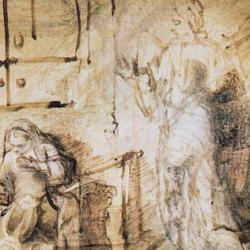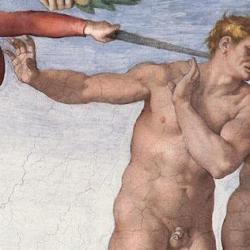The book of Genesis is neatly divided into sections by toledoth statements: “These are the generations of” or some variation. The phrase means “these are the things generated by” so and so, and the things generated are often children. But there is a variation within the book between genealogies and narratives.
The first toledoth begins a narrative: The things generated by the God of heaven and “mother” earth are human beings, Adam and Eve (2:4). The second is a straightforward genealogy, that of Adam (5:1), but the toledoth of Noah begins with a brief genealogy (6:9) and then yields to a lengthy narrative of the flood (chs. 6-9).
After the flood, we have a list of the descendants of Noah’s sons (10:1), followed by the brief account of the tower of Babel (11:1-9). The genealogy of Shem follows (11:10), which is straight genealogy, followed by the toledoth of Terah (11:27), which is largely composed of the Abraham narratives (chs. 12-25:11).
Ishmael has a brief genealogical section (25:12-18), and then the generations of Isaac launch into the narrative of Jacob with a birth narrative rather than a genealogy (25:19-35:29). Esau’s toledoth is largely genealogical (36:1), but what Jacob generates (37:2) is not genealogy but the story of Joseph and his brothers.
Schematically, we have this result:
1. Heaven and Earth: narrative
2. Adam: genealogy
3. Noah: short genealogy + medium length narrative
4. Noah’s sons: long genealogy + short narrative
5. Shem: genealogy
6. Terah: short genealogy + long narrative
7. Ishmael: genealogy
8. Isaac: narrative
9. Esau: genealogy
10: Jacob: narrative
A couple of observations: First, there is something of a pattern in the alternation. Let G stand for genealogy, and N for narrative, and the pattern is, if we ignore the combination sections, N-G-N-G, N-G-N-G-N. It’s perhaps significant that the whole is framed by straight genealogies, something that might bring out parallels between Genesis 2-4 and the Joseph story.
Second, there is an overall shift, in terms of sheer page count, from genealogy to narrative. Noah’s toledoth begins with a very brief genealogy and then goes to a fairly long narrative, but the narrative is nowhere close to the same length as the narrative that follows the genealogy of Terah in section 6. After Terah’s toledoth , further, the combination sections fall out completely. There are still genealogies, but they are not connected to the long narratives of the Isaac and Jacob sections. Noah, Noah’s sons, and Terah all generate descendants and stories; Isaac and Jacob generate only stories, while Ishmael and Esau, the other branches from Abraham and Isaac respectively, generate only sons and daughters. Genesis first shows us the world getting peopled; then it shows us what happens to those people.
Third, the people who get narrative treatment are noteworthy: Noah, Terah (Abraham), Isaac (Jacob), and Jacob (Joseph). These are clearly the characters that hold the most interest for the writer of Genesis, since they form the genealogy of Israel. But the similarity of “genre” also brings out parallels between the different characters: Noah is a new Adam; Abraham a new Noah, rebuilding a world after the flood at Babel; Jacob is an Abraham and a Noah of a different sort, etc. And each of the narrative-heavy sections hearkens back to the original narrative of heaven and earth: Noah and his wife, Abram and Sarai, Jacob and his wives, Joseph and the daughter of the Egyptian priest are new unions of heaven and earth, new Adams and Eves, beginning the project of undoing the curse.
In the end, the import of the pattern of the toledoths can best be summarized this way: All nations generate people, but the story of the world is borne by the people of God. Or, more abstractly: Everyone generates things, but the people of God are the ones who generate history, who generate events.















